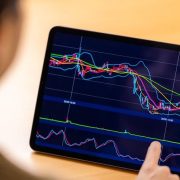When it comes to trading in financial markets, there are several strategies that traders use to profit from price movements. Three of the most popular trading styles are day trading, swing trading, and position trading. Each of these styles has its own unique characteristics and can be suitable for different types of traders depending on their goals, risk tolerance, and time horizon. In this article, we will compare the advantages and disadvantages of each trading style to help you decide which one is right for you.

Day Trading
Day trading is a style of trading where traders buy and sell securities within the same trading day, with the goal of profiting from short-term price movements. Day traders typically use technical analysis to identify trading opportunities and often trade in high volumes. They may use leverage to amplify their returns or short selling to profit from market declines. Day trading requires a lot of time and attention, as traders need to be constantly monitoring the market and making quick decisions. It can also be a high-risk strategy, as market volatility can lead to significant losses.
Swing Trading
Swing trading is a style of trading where traders hold positions for several days to weeks, with the goal of profiting from medium-term price movements. Swing traders also use technical analysis to identify trading opportunities, but they tend to rely more on chart patterns and trends than day traders. Swing traders may also use fundamental analysis to identify undervalued or overvalued securities. Swing trading requires less time and attention than day trading, as traders can hold positions for longer periods. However, it still requires discipline and risk management to avoid significant losses.
Position Trading
Position trading is a style of trading where traders hold positions for several weeks to months, with the goal of profiting from long-term price movements. Position traders use fundamental analysis to identify undervalued or overvalued securities and may also consider macroeconomic factors such as interest rates, inflation, and geopolitical events. Position trading requires the least amount of time and attention, as traders can hold positions for extended periods. However, it also requires the most patience and discipline, as traders need to be able to withstand short-term market fluctuations and stick to their long-term investment thesis.
Choosing the right trading style depends on your individual goals, risk tolerance, and time horizon. Day trading can be suitable for those who want to generate quick profits from short-term price movements, but it requires a lot of time and attention and can be high-risk. Swing trading can be suitable for those who want to profit from medium-term price movements, but it still requires discipline and risk management. Position trading can be suitable for those who have a long-term investment horizon and are willing to withstand short-term market fluctuations, but it requires the most patience and discipline.
- Day trading: suitable for those who want to generate quick profits from short-term price movements.
- Swing trading: suitable for those who want to profit from medium-term price movements.
- Position trading: suitable for those who have a long-term investment horizon and are willing to withstand short-term market fluctuations.
Ultimately, the best trading style is the one that aligns with your goals and fits your personality and lifestyle. It’s important to do your research, develop a trading plan, and stick to it consistently to achieve success in the financial markets.










Comments